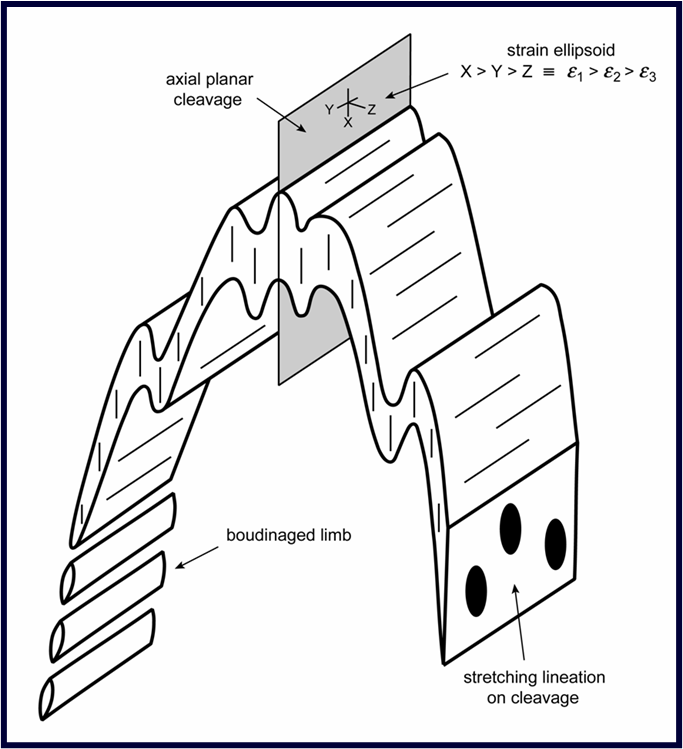3 - Strain
1/8
There's no tags or description
Looks like no tags are added yet.
Name | Mastery | Learn | Test | Matching | Spaced |
|---|
No study sessions yet.
9 Terms
What is the definition of engineering strain, logarithmic strain, angular shear, and engineering shear strain?
Engineering strain (extension): e = ΔL / L0 = ( L - L0 ) / L0 where L is the final length of the line, and L0 is the starting length. It may be positive or negative depending upon whether the line has increased or decreased in length
Logarithmic strain (natural strain): ε = ln ( L / L0 ) = ln ( 1 + e )
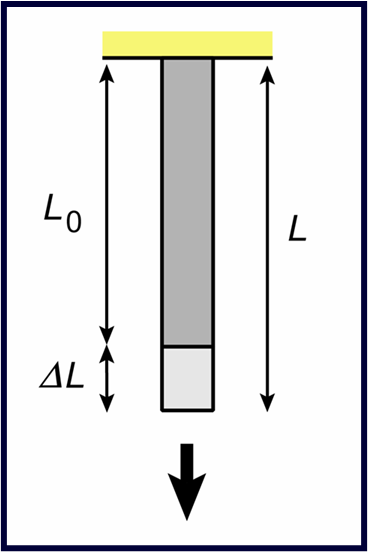
The change in angle between two lines that were originally perpendicular is known as the angular shear, ψ. Angular shear is positive for an anticlockwise rotation, and negative for a clockwise rotation
Engineering shear strain γ = tan ψ. Gamma prime is also useful: γ´ = γ/λ
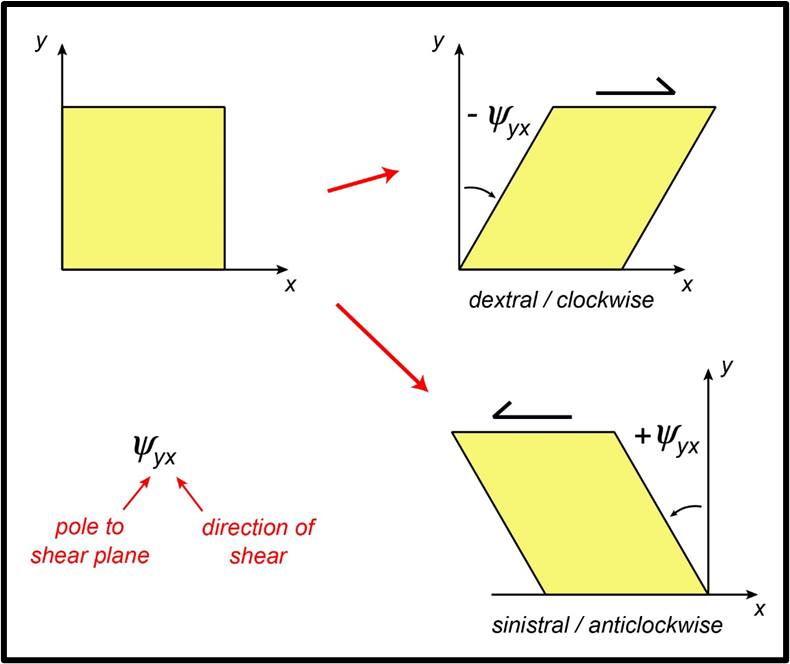
Explain the distinction between the terms ‘deformation’, ‘displacement, and ‘strain’
Deformation refers to displacement; it may or may not involve strain, e.g., rigid displacement of a body is deformation but it is not strain
Displacement describes the change in position of a given particle
Strain describes the relative change in position of particles within the feature, that is, it describes the change in distances between those particles. When these are small, strain is described as infinitesimal; when these are large (measurable) strain is described as finite
What are the four basic types of displacement? Which of these produce strain?
Rigid body translation – every particle in the body moves in the same direction and by the same distance
Rigid body rotation – uniform physical rotation of the body; the displacement vectors of the particles are not all the same (they depend upon the location of the particles relative to the axis of rotation) but the distance between particles remains unchanged
Distortion (shape change) – movement of particles so that they change position relative to each other; the displacement vectors are not all the same
Dilation (change in volume without change in shape)
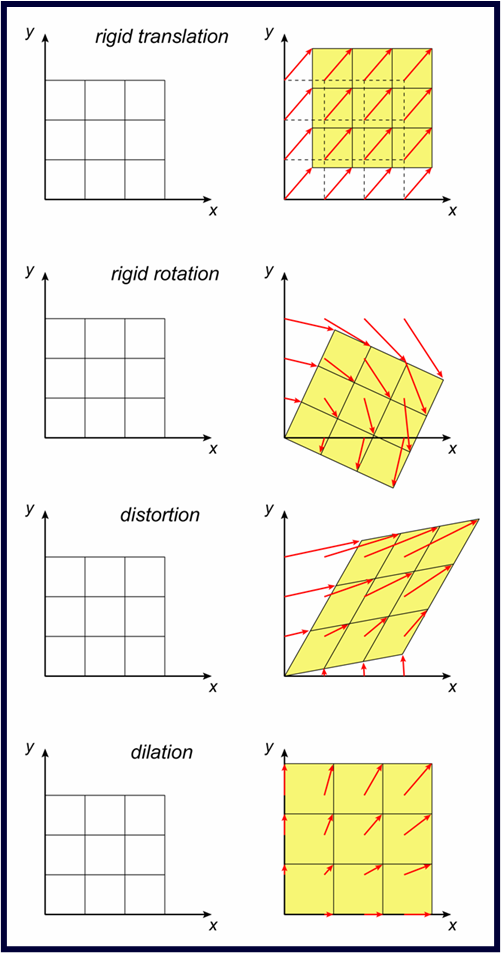
What is a strain ellipse?
Strain in two dimensions is conveniently visualized using the strain ellipse. This ellipse represents the deformed shape of an initially circular marker, and illustrates how linear strain and angular shear vary with direction
There are two perpendicular directions (the major and minor axes of the ellipse) where the extensions are at maximum and minimum values and the angular shear is zero.
These max and min values are termed the principal strains, e1 and e2 (where by definition e1 ³ e2)
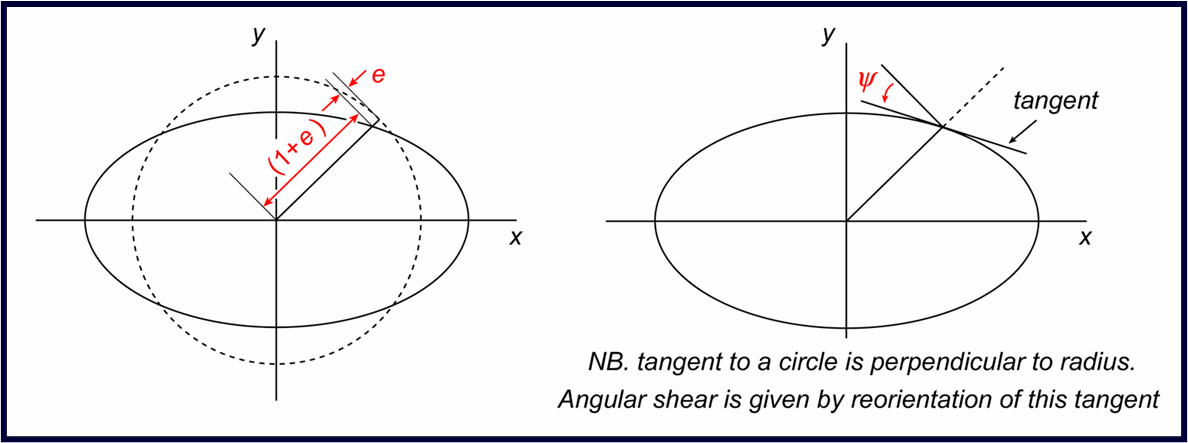
What is the difference between pure shear and simple shear?
Simple shear: in which the 2d body is subjected to a uniform shear parallel to some given direction without area change; the principal axes of strain rotate during the deformation, and hence such deformation is described as rotational and non-coaxial
Pure shear: extension or contraction involving no area change in which the principal axes of strain do not rotate; such deformation is described as irrotational and coaxial
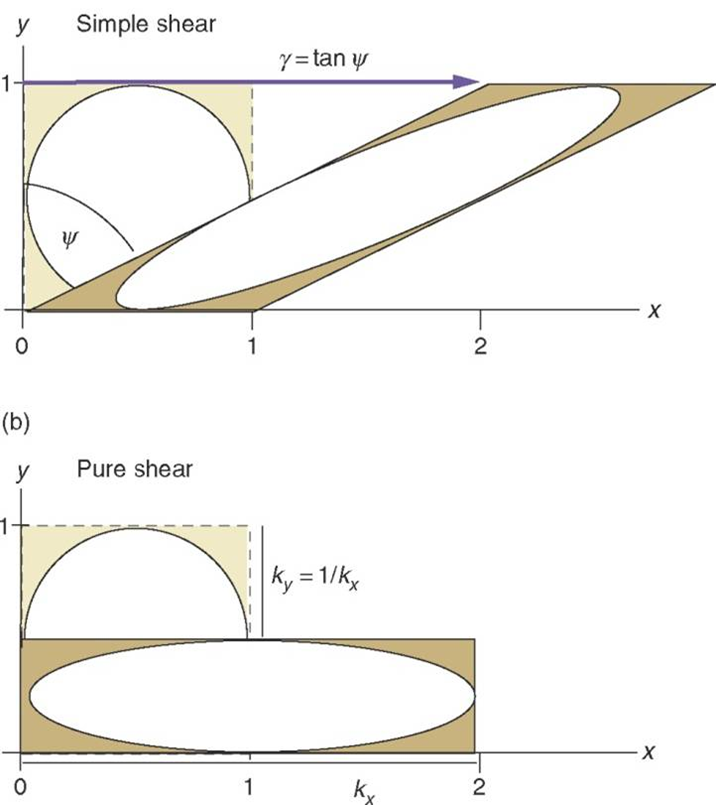
Define ‘plane strain, and ‘axially symmetric strain’
Plane strain is when there is no stretching or shortening in one principal direction (Y direction); in such cases the strain can be regarded as two-dimensional
Axially symmetric extension or compression is an irrotational deformation in which the length changes along two principal directions (Y and Z or X and Y respectively) are equal
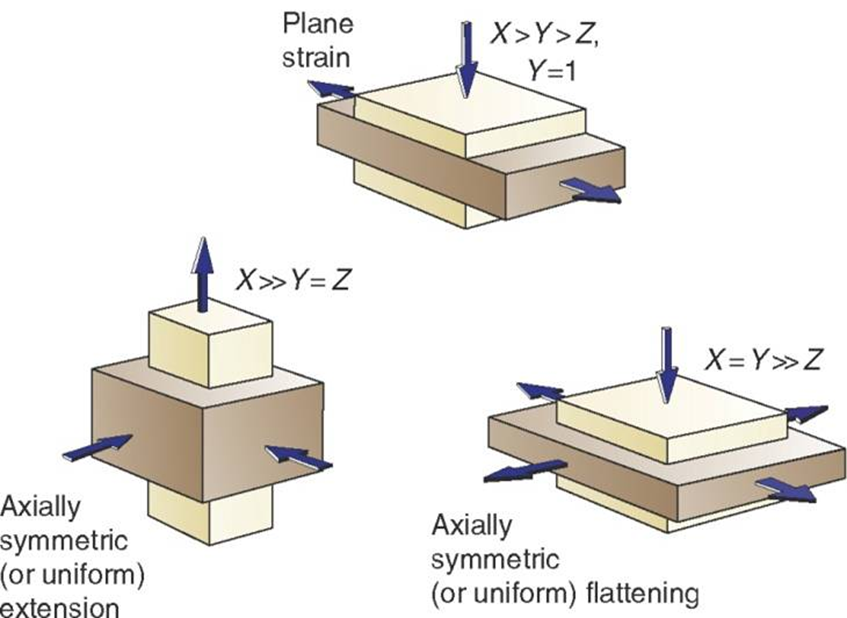
Using the X, Y, Z nomenclature, define a prolate and an oblate strain ellipsoid
The shape of the strain ellipsoid can be visualized by plotting RXY against RYZ (usually logarithms of these ratios are plotted). Such a diagram is called a Flinn diagram
A Flinn diagram separates strain ellipsoids that have prolate form (cigar shapes) from ones that have oblate form (pancake shapes)
Separating deformations dominated by extension in one direction from ones dominated by flattening in one direction
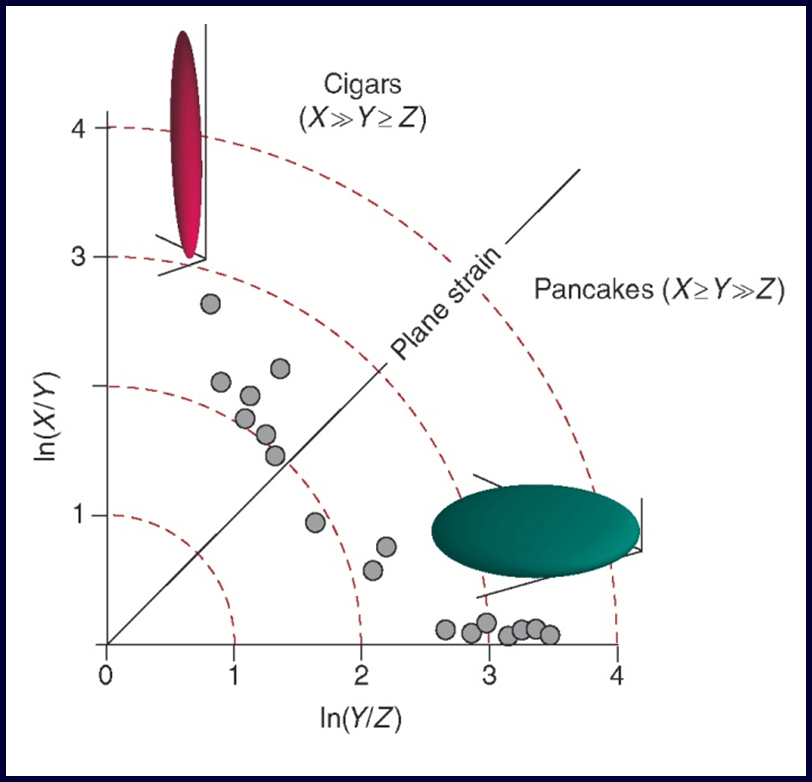
In the X, Y, Z nomenclature, what direction is a stretching lineation?
In moderate to high-grade deformed metamorphic rocks, the nature of the fabric provides the most immediate impression of the geometry of the strain ellipsoid.
If linear elements dominate (prolate ellipsoid), the rock is described as an L-tectonite
If planar elements dominate (oblate ellipsoid,) it is an S-tectonite.
Those with both a strong foliation and a strong lineation are LS-tectonites
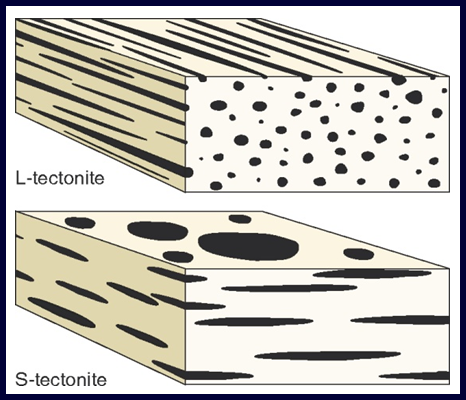
In the X, Y, Z nomenclature, what plane is cleavage?
Cleavage in deformed rocks is generally assumed to represent the XY plane (principal flattening plane)
Within shear zones, cleavage tracks the XY plane across the shear zone
